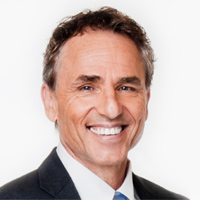How a Low-Fee Fund Can Be a High-Cost Mistake
Investors who focus only on fees may regret it as they try to make their savings last through retirement.


Everyone knows that keeping investing fees and expenses to a minimum is one of the keys to building a retirement nest egg. After all, every dollar that stays in your account instead of going toward a fee can grow for your future.
However, the cost of investing can be far greater than just fees and expenses, especially for people nearing retirement. If you are so focused on fees that you ignore other crucial investment principles — such as diversification — you could be losing piles of money to save yourself pennies on the dollar.
So, how do fees and expenses differ from the cost of owning an investment?
Let’s be clear: A fee is a charge for services rendered. An expense is the hard cost of being in an investment. There is a physical cost of doing business even for discounters like Vanguard or Fidelity. After all, they have to turn on the lights, pay people and make trades.

Sign up for Kiplinger’s Free E-Newsletters
Profit and prosper with the best of expert advice on investing, taxes, retirement, personal finance and more - straight to your e-mail.
Profit and prosper with the best of expert advice - straight to your e-mail.
For the investor, fees and expenses are only part of their cost of ownership. Consider a person who chose to retire in 2007 in a seemingly stable market. Let’s say Doug, age 62, had built up a 401(k) of $500,000. Although he was given the choice of investing in target-date funds through his plan, he decided that remaining fully invested in stocks was a much better proposition. He failed to diversify an appropriate amount with fixed-income assets, and that decision ended up costing him a LOT of money.
Doug wisely kept his fees and expenses to a minimum. So, what went wrong?
Other than failing to diversify, Doug made all the right moves. He rolled over his 401(k) to a large discount brokerage. He placed all of his funds into a famous index fund with the lowest fees and expenses in the industry: a minuscule 0.14%. Doug was very proud of this choice and was confident that, by staying with the index, he would continue to realize strong average rates of return, and that by keeping fees to a minimum, he would be funding his own retirement rather than a broker’s.
Once he retired, Doug needed income from his IRA. His plan was to keep his withdrawals to a conservative minimum, 4%. Much of the literature he had read pointed to 4% as a “safe” withdrawal rate. In 2007, bond interest rates were in the 5% range. But Doug had done very well by staying in the stock market the past 25 years and viewed a 5% bond return as being “inferior” to the 8% to 9% average he had experienced in the past and anticipated over the next 20 years.
Doug’s grasp of statistical averages was sound, but his strategy was flawed from the inception. He ignored key investing concepts like diversification, sequence-of-returns risk and time horizon.
Although his fees were the lowest in the world, his cost of remaining fully invested in the S&P 500 turned out to be quite steep. By March 2009, the S&P 500 had lost 57% of its value from its peak in 2007. (Source: Standard & Poor’s)
The cost of holding his investment for that time period: $285,000.
Although the market would begin to recover by the summer of 2009, Doug was no longer contributing to his account; he was drawing from it. He was still relying on withdrawing the $20,000 a year from his IRA and was ready to take his third year of withdrawals by 2009. If he maintained the same $20,000 annual withdrawal, the total of withdrawals would come to $60,000. After a $285,000 loss, a $500,000 account would be left with $215,000. Using simple math, if $60,000 is subtracted from $215,000, the account holder is left with $155,000.
Can this happen? It did happen to many retirees in the crash of 2008. Those who haven’t retired yet might give Doug some very simple advice: Stop withdrawing. Working people forget that the comfortable six-figure income from work is no longer there. That $20,000 annual withdrawal represents the intended end game of a lifetime of savings and dreams.
Sure, Doug could skimp on his lifestyle or go back to work part time. But neither of those ideas were part of his Plan A. He found himself in a grimmer Plan B. The fact that his fees and expenses were low offered little consolation.
If Doug’s income needs remained at $20,000 in order to keep funding his lifestyle (along with Social Security and pension income), he would no longer be taking a 4% withdrawal from his account in order to net $20,000. A $20,000 withdrawal from $215,000 amounts to a 9.3% withdrawal.
Doug’s two biggest mistakes
There are two money concepts important to understand in retirement: time horizon and sequence-of-returns risk.
Doug’s first mistake was investing like he was still 35 years old. He kept listening to the same advice he always had. That was his biggest mistake because his time horizon had shifted dramatically. His second mistake was not realizing the “flaw of averages.” While stocks may average an 8% to 10% return over long time periods, there are times when they can be down 20% to 40%. When contributing to the pile during such times, you are buying more shares at a discount. When withdrawing from the pile, you are cashing out at the worst possible time. That’s the sequence of returns risk in a nutshell.
While he kept his fees and expenses low, he learned (the hard way) that the cost of an investment can be far greater. While many critics point to annuities as having higher fees or expenses, they may have the lowest cost in some cases. With the right principal-protected annuity, Doug would not have lost a penny in the crash and could have counted on his annual income to remain at $20,000 for life. That element of safety, even if it comes with a fee, may end up resulting in a lowest cost.
Kevin Derby contributed to this article.
Disclaimer
The appearances in Kiplinger were obtained through a PR program. The columnist received assistance from a public relations firm in preparing this piece for submission to Kiplinger.com. Kiplinger was not compensated in any way.
Get Kiplinger Today newsletter — free
Profit and prosper with the best of Kiplinger's advice on investing, taxes, retirement, personal finance and much more. Delivered daily. Enter your email in the box and click Sign Me Up.

Steve Jurich is the founder of IQ Wealth Management in Scottsdale, Ariz. He has more than 23 years of experience helping individuals, families and businesses realize their money goals. He is the author of the book "Smart is the New Rich" and hosts the daily radio show "Mastering Money" on Money Radio. Jurich is an Accredited Investment Fiduciary® and a Certified Annuity Specialist® who manages the IQ Wealth Black Diamond Dividend Growth ™ and the Blue Diamond Technology Leaders™ portfolios.
-
 Stock Market Today: Great Power Affairs Mesmerize Markets
Stock Market Today: Great Power Affairs Mesmerize MarketsThe U.S. and China are at least talking about talking about tariffs, and investors, traders and speculators are showing a little less fear.
By David Dittman
-
 Is Walmart Plus Worth It?
Is Walmart Plus Worth It?There are tons of exciting Walmart Plus benefits – but are they worth the $98 annual fee?
By Rachael Green
-
 Three Options for Retirees With Concentrated Stock Positions
Three Options for Retirees With Concentrated Stock PositionsIf a significant chunk of your portfolio is tied up in a single stock, you'll need to make sure it won't disrupt your retirement and legacy goals. Here's how.
By Evan T. Beach, CFP®, AWMA®
-
 Four Reasons It May Be Time to Shop for New Insurance
Four Reasons It May Be Time to Shop for New InsuranceYou may be unhappy with your insurance for any number of reasons, so once you've decided to shop, what is appropriate (or inappropriate) timing?
By Karl Susman, CPCU, LUTCF, CIC, CSFP, CFS, CPIA, AAI-M, PLCS
-
 Before You Invest Like a Politician, Consider This Dilemma
Before You Invest Like a Politician, Consider This DilemmaAs apps that track congressional stock trading become more popular, investors need to take into consideration some caveats.
By Ryan K. Snover, Investment Adviser Representative
-
 How to Put Together Your Personal Net Worth Statement
How to Put Together Your Personal Net Worth StatementNow that tax season is over for most of us, it's the perfect time to organize your assets and liabilities to assess your financial wellness.
By Denise McClain, JD, CPA
-
 Bouncing Back: New Tunes for Millennials Trying to Make It
Bouncing Back: New Tunes for Millennials Trying to Make ItAdele's mournful melodies kick off this generation's financial playlist, but with the right plan, Millennials can finish strong.
By Alvina Lo
-
 Early-Stage Startup Deals: How Do Convertible Notes Work?
Early-Stage Startup Deals: How Do Convertible Notes Work?Some angel investors support early startups by providing a loan in exchange for a convertible note, which includes annual interest and a maturity date.
By Murat Abdrakhmanov
-
 SRI Redefined: Going Beyond Socially Responsible Investing
SRI Redefined: Going Beyond Socially Responsible InvestingNow that climate change has progressed to a changed climate, sustainable investing needs to evolve to address new demands of resilience and innovation.
By Peter Krull, CSRIC®
-
 Here's When a Lack of Credit Card Debt Can Cause You Problems
Here's When a Lack of Credit Card Debt Can Cause You ProblemsUsually, getting a new credit card can be difficult if you have too much card debt, but this bank customer ran into an issue because he had no debt at all.
By H. Dennis Beaver, Esq.